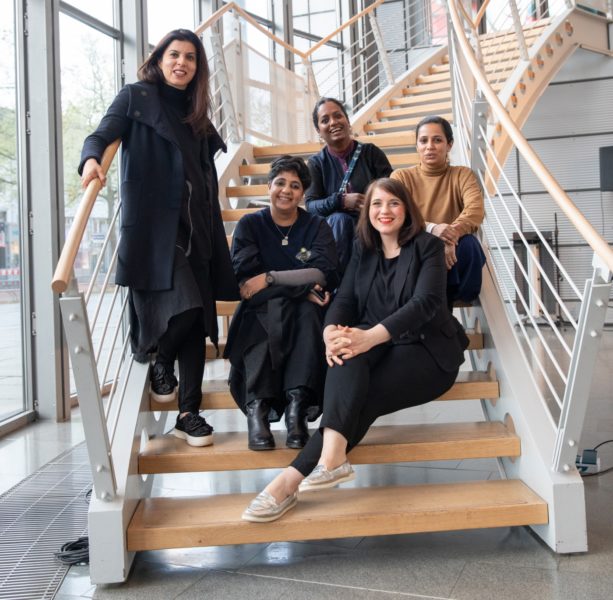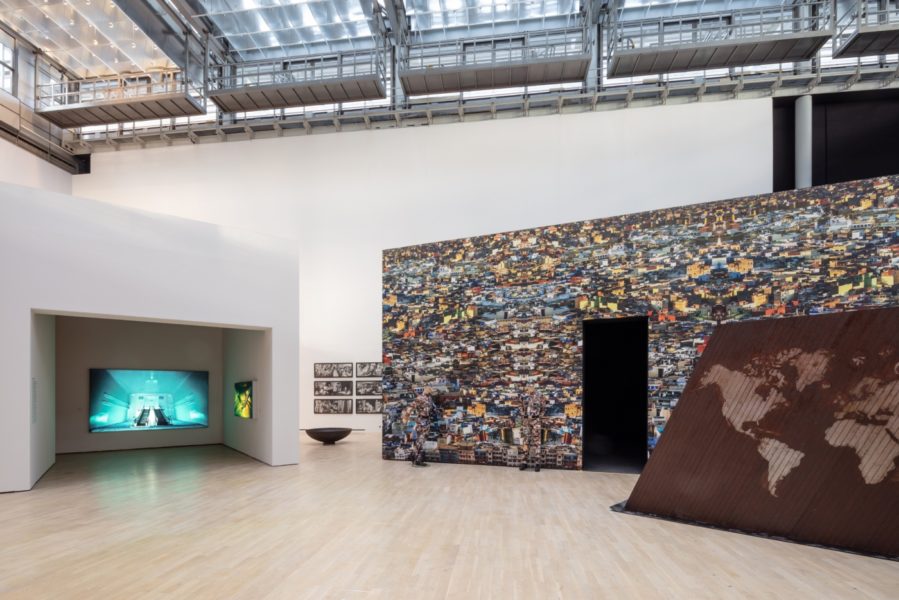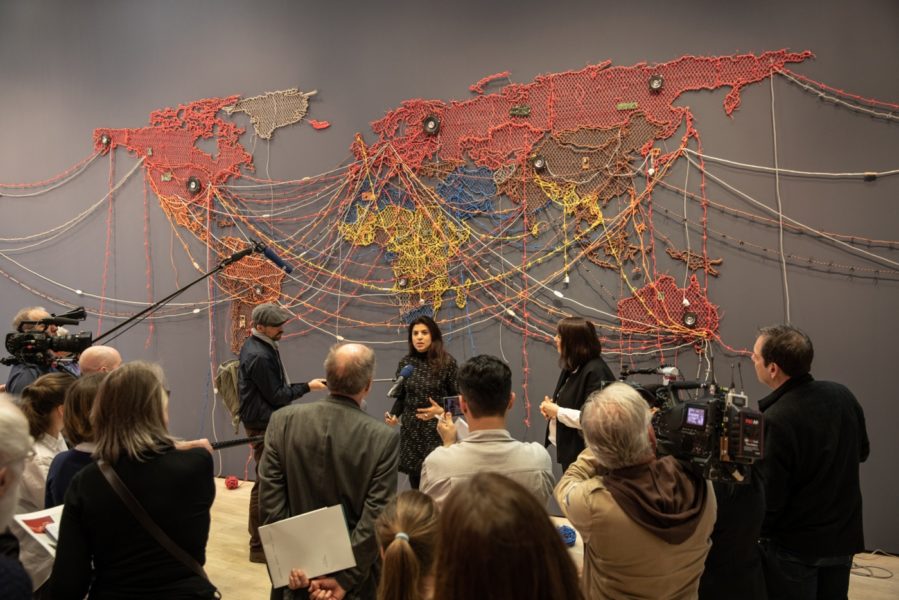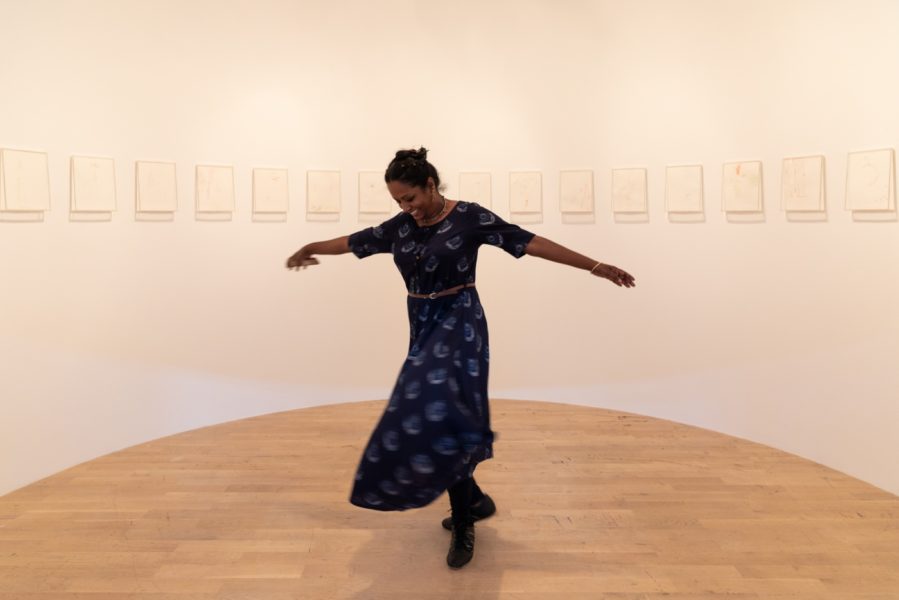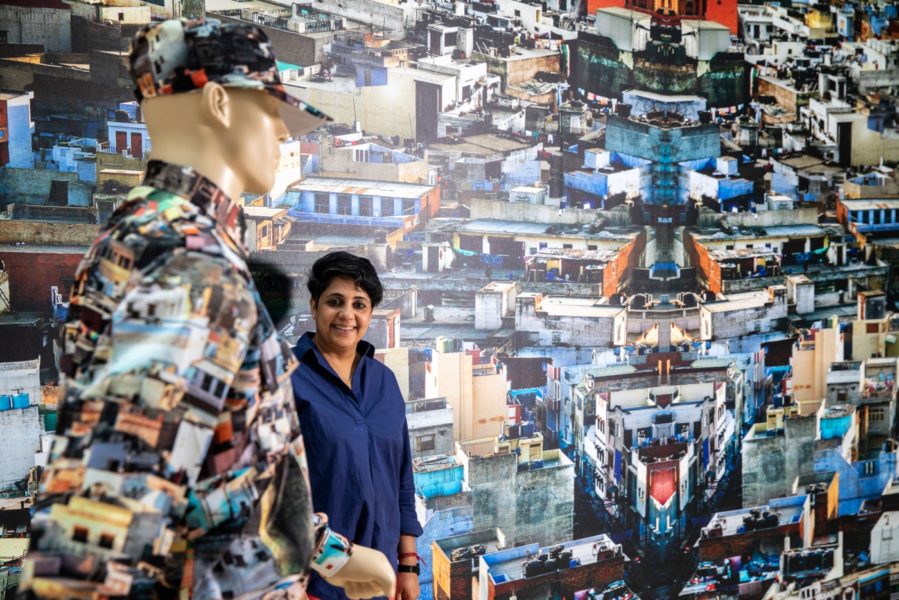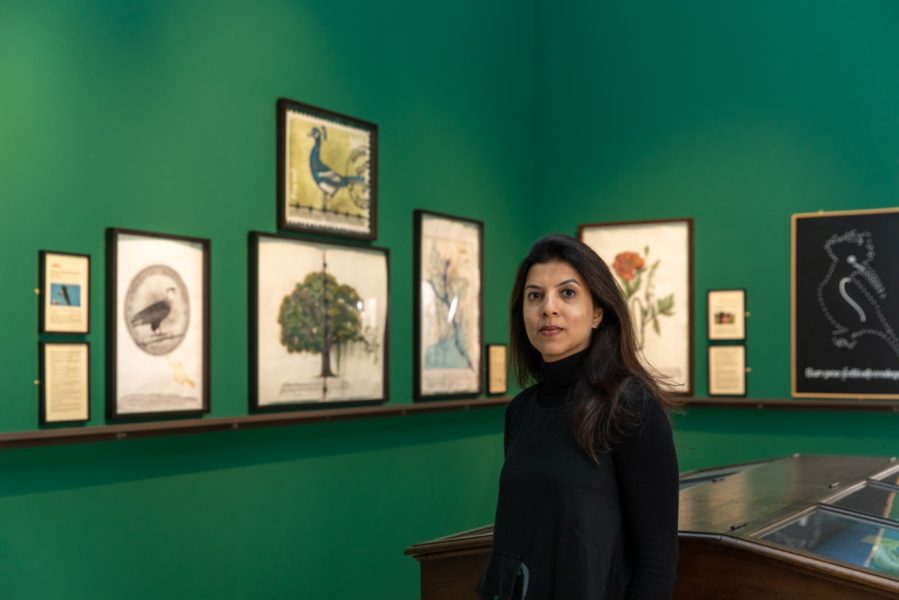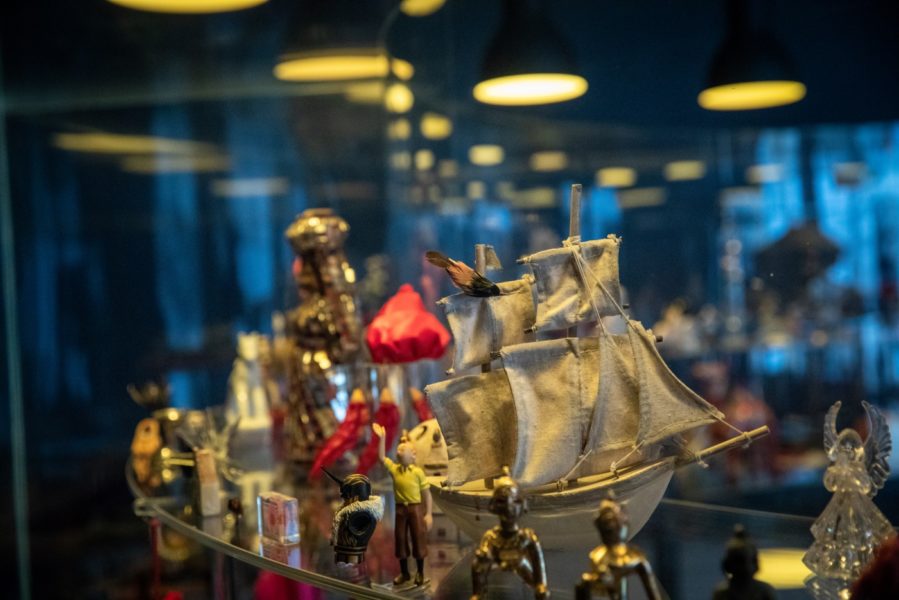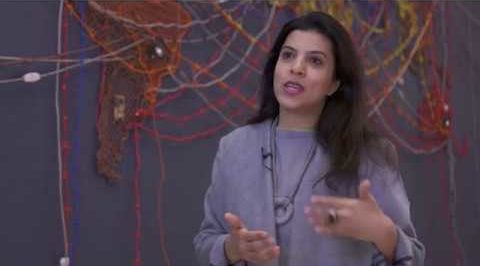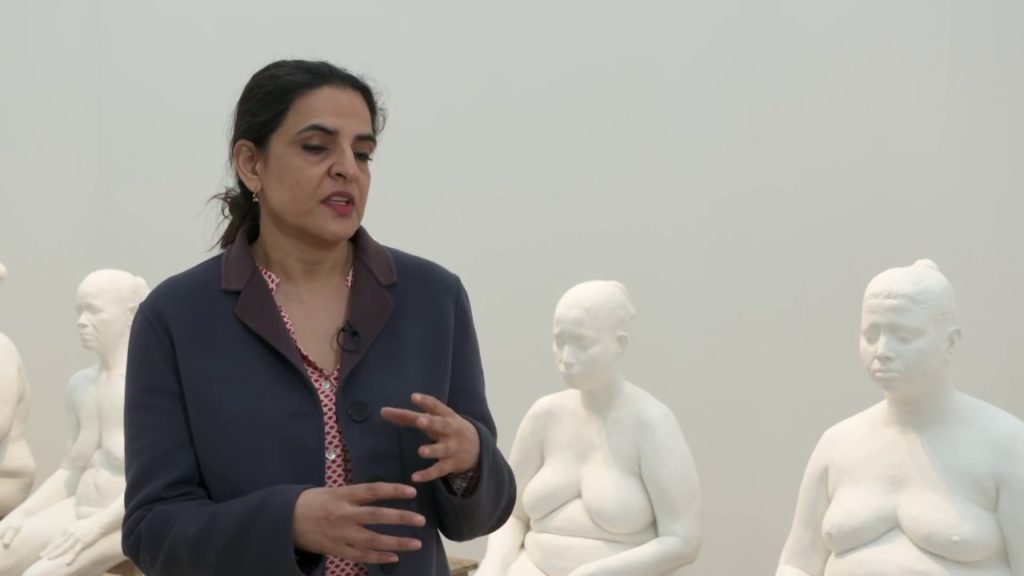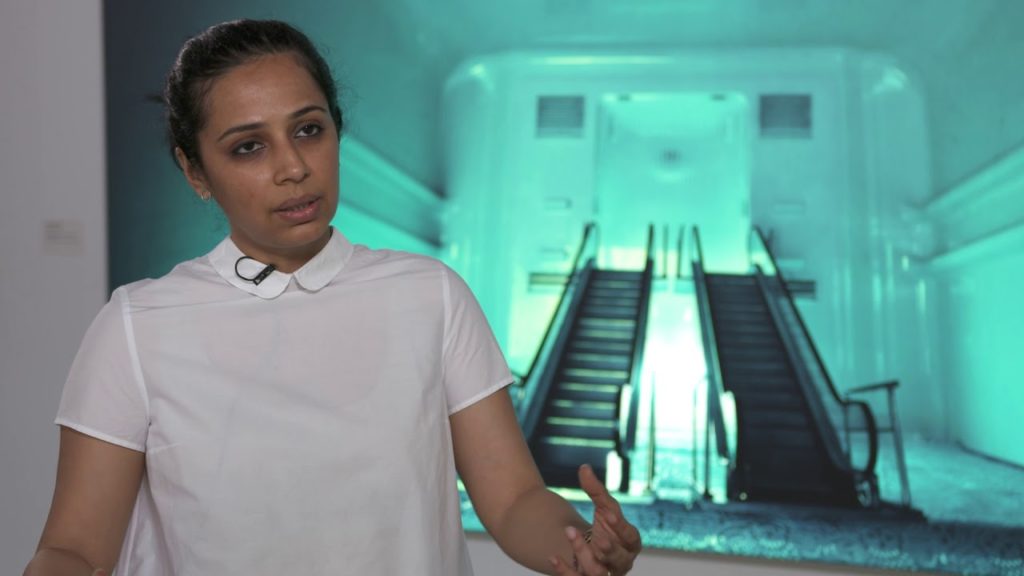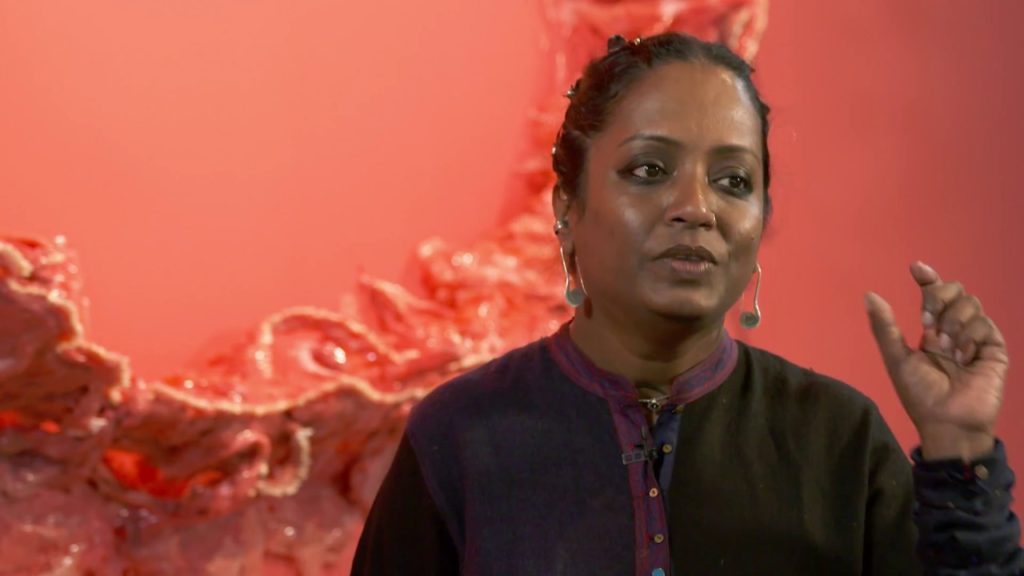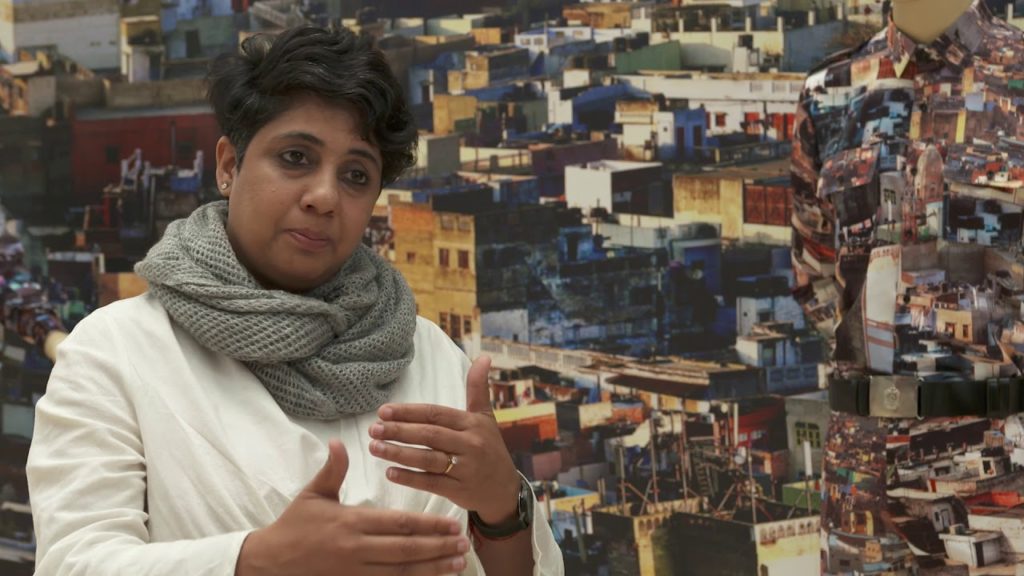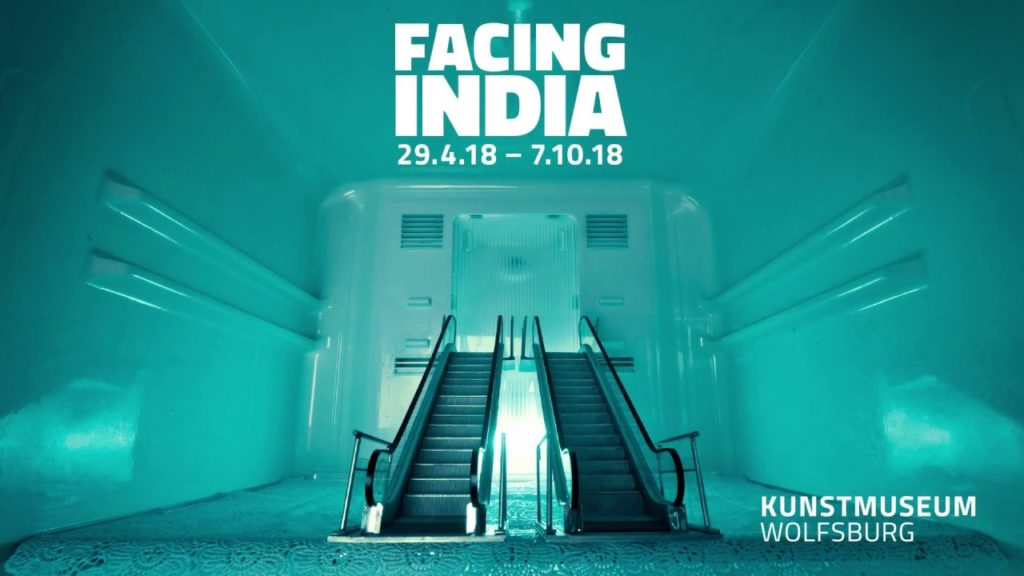Facing India
Installationviews
Info
How do women artists in India use their voices today? How do they deal with their social responsibility? Which language do they find for that which remains unsaid? For the first time in Germany, the Kunstmuseum Wolfsburg is presenting an exhibition with works by six women artists from India. Vibha Galhotra (b. 1978), Bharti Kher (b. 1969), Prajakta Potnis (b. 1980), Reena Saini Kallat (b. 1973), Mithu Sen (b. 1971), and Tejal Shah (b. 1979) face the reality of India and negotiate this in their works both artistically and politically.
Although women and men have equal legal status, Indian society is profoundly marked by patriarchy. India finds itself in a state of fundamental social change, yet it remains torn between the poles of tradition and progress — and in this field of tension, women are still strongly disadvantaged. The rapid development of urban India thus runs contrary to the living conditions in rural areas. Countless ethnicities, castes, languages, cultures, religions, and philosophies form an ostensibly pluralistic society, in which identity is defined by differentiation from the respective other. The social structure of India thus reflects that of our global community as a whole, which basically struggles with the same issues.
“Facing India” examines the question of how one’s own national history, present, and future manifest themselves from a female point of view. In their multimedia works, Vibha Galhotra, Bharti Kher, Prajakta Potnis, Reena Saini Kallat, Mithu Sen, and Tejal Shah shift attention towards historical and contemporary conflicts. Poetic, metaphorical, and quiet, but also radical, direct, and loud — they question borders of all kinds, be these political, territorial, ecological, religious, social, personal, or gender-based. The history of these borders, their visibility and invisibility, their legitimacy, and not seldom their dissolution are the themes of the works presented in “Facing India”. The exhibition focuses on six positions in order to present these more comprehensively. Socialized and educated in an increasingly globalized world, these women artists no longer limit their “border controls” solely to India, but rather reach out into other countries and continents. The state, society, and the individual, as well as questions regarding identity and the environment, are critically examined. Nevertheless, as broad as their range of topics may be, explicit and implicit references to the presence of the feminine and the position of women, as well as solidarity and empathy, are recurring themes throughout the exhibition.
“Facing India” was developed out of a continuing dialog with the artists and reflects a kind of collective plea for communication and the notion of unity in diversity beyond pigeonhole thinking and caste mentality. The exhibition architecture incorporates these ideas. Each of the six artists has her own separate exhibition space, which are arranged to provide clear visual relations to each other. The center of the exhibition is an open communication forum, which allows the visitor a view in all directions — both literally and metaphorically.
Catalog
The catalog, edited by Ralf Beil and Uta Ruhkamp in separate German and English versions, with a preface by Ralf Beil and an introduction by Uta Ruhkamp, essays by Urvashi Butalia, head of the feminist publishing house Zubaan, and Roobina Karode, director of the Kiran Nadar Museum of Art in New Delhi and Noida, as well as in-depth interviews with all six artists conducted by Uta Ruhkamp. 240 pages with 150 illustrations, 24 x 31 cm, hardcover, 38 € in the museum shop.
Artists
The works of Vibha Galhotra (b. 1978) revolve around the question of what it means to work as a visual artist in the Anthropocene. Is it possible to address social, ecological, and political issues such as climate change through artistic practice without having the aesthetics of the works draw full attention to the artist and normalizing devastating problems? The object of her investigations are the five elements: water, earth, air, fire, and ether. With an ostensibly romanticizing pictorial language, Galhotra addresses problems such as the contamination of the sacred Yamuna River and the concentration of particulate matter in Delhi, which exceeds all permissible values. The anti-pollution mask becomes an everyday article of clothing, alarming climate graphics are transformed into a wave of bells reminiscent of Arte povera, and the cleansing of plants becomes Zen meditation. With her works, Vibha Galhotra reacts to human irrationality in the “Age of Reason.” Their aestheticization of the ecological catastrophe is simultaneously a strategy of mediation and an ironic refraction.
Bharti Kher (b. 1969) is the only artist in the exhibition who was born in the diaspora in London. She has been living in India since 1992 and thus has a dual perspective onto the patriarchal society of her country. Her works are born out of the observation of her everyday surroundings—objects, articles, and characteristic features—which she recontextualizes as “objet trouvés” or ready-mades. Decisive identifying signs of women in India, such as bindis, saris, or bracelets, become artistic media and, despite the absence of the body, suggest the presence of the feminine. Kher’s approach is based not on reproduction, but rather on suggestion. With her works, she addresses classical questions of materials and composition; but as an avowed feminist, she does not shy away from clear, socially critical statements. Her black “Deaf Room” stands for the muted voices of countless women, while “Six Women” addresses the maltreated bodies of sex workers in Kolkata. Bharti Kher bursts the boundaries of the traditional image of women in India and allows women to take on multiple identities, preferably as the stronger sex.
Prajakta Potnis (b. 1980), the youngest artist in the exhibition, lends expression to her observations of society in an indirect and metaphorical manner. She understands material and physical boundaries, such as various kinds of walls and skin, as permeable membranes. Which traces do they bear? What penetrates through them, and what influences our psyche? Prajakta Potnis makes that visible which grows rampant invisibly in our society, like a virus that infects everyday life. As a starting point for her inquiry, she chooses the place with the strongest female connotation—not only in India—namely the home and especially the kitchen, which fascinates her as a conflict zone between tradition and the proliferation of technology. The dryer, the blender, the refrigerator, and the freezer become negotiation sites for political and ecological issues, outdated ideologies, social criticism, and questions of identity. The personal becomes political when an atomic mushroom-like cauliflower suggests genetic manipulation, the valves of pressure cookers refer, like small grenades, to the feeling of a constant threat of terrorism or the surveillance state, or miniature escalators in a refrigerator recall a global “nowhere” of interchangeable shopping malls and airports which negate any sense of local identity.
That which separates and that which connects are leitmotifs in the work of Reena Saini Kallat (b. 1973). She is, however, not only interested in disputed territorial borders, but also in social and psychological barriers. Despite its barbed wire aesthetics, her work “Woven Chronicle”—a map of the world composed of electrical cables—which traces global migration routes, stands not only for international border conflicts, but also functions as a metaphor for networks: a manifesto of potential communication. Fully in line with this, nature in Reena Saini Kallat’s works exemplifies that which humankind is not capable of, either historically or in the present, namely peaceful coexistence on an equal footing, a lived pluralism of cultures. With her “Hyphenated Lives”, she thus creates a world of animal and botanical hybrids, comprised of the typical flora and fauna of two states in conflict with each other, be these India and Pakistan or Texas and Mexico. Reena Saini Kallat names the nameless and sees in retrospection an opportunity to look ahead. In “Crease/Crevice/Contour”, she does not hesitate to inscribe the female body with the violence suffered during the Indo-Pakistani partition in 1947 as a visible wound and speaks clearly in favor of a culture of memory instead of one of silence.
Mithu Sen (b. 1971) makes her own rules and defies categorization. For her all-encompassing revolt, she has chosen the prefix “un‑,” which simultaneously negates an occurrence or a statement: (un)becoming, un(home), un(construct), un(mything), and even un(mithu). In her drive to dissolve boundaries, Mithu Sen breaks down not only language into its component parts, only to piece it back together again. The site of her reflection is the body. In her paintings, drawings, sculptures, and installations, she overlaps female and male sexual characteristics, flowers and fruits, as well as human and animal elements, to create bizarre and shocking hybrids. Universals of human and animal existence, such as hair, bones, or teeth, question not only established hierarchies and boundaries between the sexes, but also those between ethnicities, castes, and species. With the radicalness of her visual language, she stridently breaks taboos. Her will to dissolve extends as far as institutional criticism. With her “Museum of Unbelongings” (2018), she thus puts forth the idea of a democratic museum of marginalized things, which makes due without labels and hierarchies. All objects have the same value—a metaphor for an egalitarian world without borders.
Tejal Shah (b. 1979) represents one of the most radical positions within the contemporary Indian art scene. Her work revolves around the question of the pure essence of existence. She searches for answers in extremely divergent fields, including Buddhism, studies on communication between humans and animals, and queer-feminist or post-porn theories. In her complex work “Between the Waves”—a five-channel video installation which premiered at the “documenta 13”—creatures that appear to have fallen out of time and space explore a primeval and simultaneously undeniably contemporary world, all the while following their natural instincts, in which they indulge themselves in front of the camera without shame. Unmistakable is her demand for the acknowledgement of a flexible understanding of gender, beyond binary, biological, and socially construed gender roles. This is reflected in works such as “Women Like Us” and “I AM”, a portrait gallery of Indian women, whose self-understanding does not correspond with conservative notions of female identity, or “Untitled (On Violence)”, in which she openly addresses the violence of the state against the so-called “third gender” (hijra). With her works, Tejal Shah provocatively and directly advocates social justice and a society free of taboos and, in doing so, oversteps the boundaries of activism.
